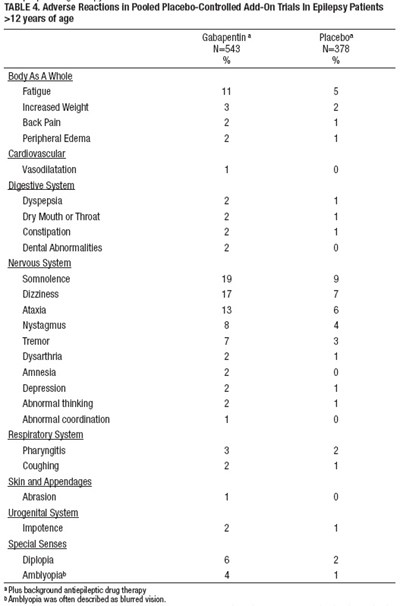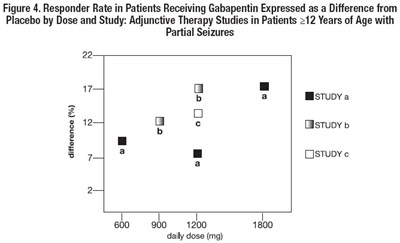Product Images Gabapentin
View Photos of Packaging, Labels & Appearance
- Gabapentin Tablets USP 800mg - 180B99A5 7D3D 4EE5 A0CC 1AE0EDE646EE 00
- sideeffects - Sideeffects
- Table-1 - Table1
- Table-2 - Table2
- Table-3 - Table3
- Table-4 - Table4
- Table-5 - Table5
- Table-6 - Table6
- clcr - clcr
- Figure-1 - figure1
- Figure-2 - figure2
- Figure-3 - figure3
- Figure-4 - figure4
- struc - struct
Product Label Images
The following 14 images provide visual information about the product associated with Gabapentin NDC 68788-8468 by Preferred Pharmaceuticals Inc., such as packaging, labeling, and the appearance of the drug itself. This resource could be helpful for medical professionals, pharmacists, and patients seeking to verify medication information and ensure they have the correct product.
Gabapentin Tablets USP 800mg - 180B99A5 7D3D 4EE5 A0CC 1AE0EDE646EE 00

Gabapentin Tablets, USP 800mg is a generic version of the medication Neurontin. Each tablet contains 800mg of gabapentin. The tablets are oval, white, scored, and imprinted with "T". They are manufactured by Ascent Pharmaceuticals, Inc. The recommended dosage is to take the tablet(s) multiple times a day. It is important to keep the medication out of the reach of children. The tablets should be stored in a controlled room temperature environment. The package size, expiration date, lot number, batch number, and other details are not available. The medication is for oral use only and should be taken as prescribed by a healthcare professional.*
sideeffects - Sideeffects

This text describes symptoms and signs that may indicate a medical condition. These include a lack of coordination, viral infection, difficulty with speaking, tremors, swelling (usually in the legs and feet), fatigue, fever, drowsiness, nausea and vomiting, jerky movements, difficulty with coordination, double vision, and unusual eye movements. These symptoms and signs may be associated with various health issues and should be evaluated by a medical professional for proper diagnosis and treatment.*
Table-1 - Table1

Based on the text, this appears to be a dosage table for Gabapentin based on renal function. The table provides different dosages depending on the patient's creatinine clearance. The total daily dose ranges from 900 mg to 3600 mg for patients with a creatinine clearance of 60 mL/min or greater. For patients with creatinine clearance between 30 mL/min to 59 mL/min, the total daily dose ranges from 400 mg to 1400 mg. For patients with creatinine clearance between 15 mL/min to 29 mL/min, the total daily dose ranges from 200 mg to 700 mg. The table also includes a supplemental post-hemodialysis dose for patients on hemodialysis. It provides dosing regimens for three times a day (TID), two times a day (BID), and single daily dose (QD).*
Table-2 - Table2

Indication: This text provides information on the risk associated with antiepileptic drugs for different indications, such as epilepsy, psychiatric conditions, and others. The data is presented in a table, showing the number of events per 1,000 patients for both placebo and drug patients. The relative risk and risk difference between drug and placebo patients are also provided.*
Table-3 - Table3

TABLE 3. Adverse Reactions in Pooled Placebo-Controlled Trials in Postherpetic Neuralgia. This table provides a list of adverse reactions observed in patients with postherpetic neuralgia who received gabapentin compared to patients who received a placebo. The table includes the number of patients in each group (N), as well as the percentage of patients (%) who experienced each adverse reaction. The adverse reactions are grouped by body system, including the body as a whole, digestive system, metabolic and nutritional system, nervous system, respiratory system, and special senses. Some of the adverse reactions listed include asthenia, infection, accidental injury, diarrhea, dry mouth, constipation, nausea, vomiting, peripheral edema, weight gain, hyperglycemia, dizziness, somnolence, ataxia, abnormal thinking, abnormal gait, incoordination, pharyngitis, amblyopia, conjunctivitis, diplopia, and otitis media. Blurred vision is also reported.*
Table-4 - Table4

TABLE 4. Adverse Reactions In Pooled Placebo-Controlled Add-On Trials In Epilepsy Patients >12 years of age This table provides a summary of adverse reactions reported in patients with epilepsy who participated in placebo-controlled trials, where gabapentin was added to their existing treatment regimen. The table includes the number of patients (N) for both the gabapentin and placebo groups, as well as the percentage of patients (%). The adverse reactions are categorized based on body systems: 1. Body As A Whole: Fatigue 2. Body Weight: No significant change 3. Back Pain 4. Peripheral Edema 5. Cardiovascular: Vasodilation 6. Digestive System: Dyspepsia, Dry Mouth or Throat, Constipation, Dental Abnormalities 7. Nervous System: Somnolence, Dizziness, Ataxia, Nystagmus, Tremor, Dysarthria, Amnesia 8. Depression 9. Abnormal thinking 10. Abnormal coordination 11. Respiratory System: Pharyngitis, Coughing 12. Skin and Appendages: Abrasion 13. Urogenital System: Impotence 14. Special Senses: Diplopia, Amblyopia In addition, the text mentions that amblyopia, often described as blurred vision, was frequently reported as an adverse reaction in these trials.*
Table-6 - Table6

This text provides information about controlled PHN (postherpetic neuralgia) studies involving the drug Gabapentin. The table includes the duration of the studies, the dosages of Gabapentin given to the patients, and the number of patients receiving both Gabapentin and placebo. The first study lasted for 8 weeks and involved a target dose of 3600 mg/day, with 113 patients receiving Gabapentin and 116 receiving placebo. The second study lasted for 7 weeks and had varying dosages of 1800 and 2400 mg/day, with 223 patients receiving Gabapentin and 111 receiving placebo. The total number of patients in both studies was 336 for Gabapentin and 221 for placebo. The information indicates that Gabapentin was given in three divided doses (TID) during the studies.*
clcr - clcr

This text appears to be a formula or equation related to medical evaluation. It mentions variables such as age, weight, and serum creatinine level. However, without further context or clarity in the text, it is difficult to provide a specific description or interpretation.*
* The product label images have been analyzed using a combination of traditional computing and machine learning techniques. It should be noted that the descriptions provided may not be entirely accurate as they are experimental in nature. Use the information in this page at your own discretion and risk.





